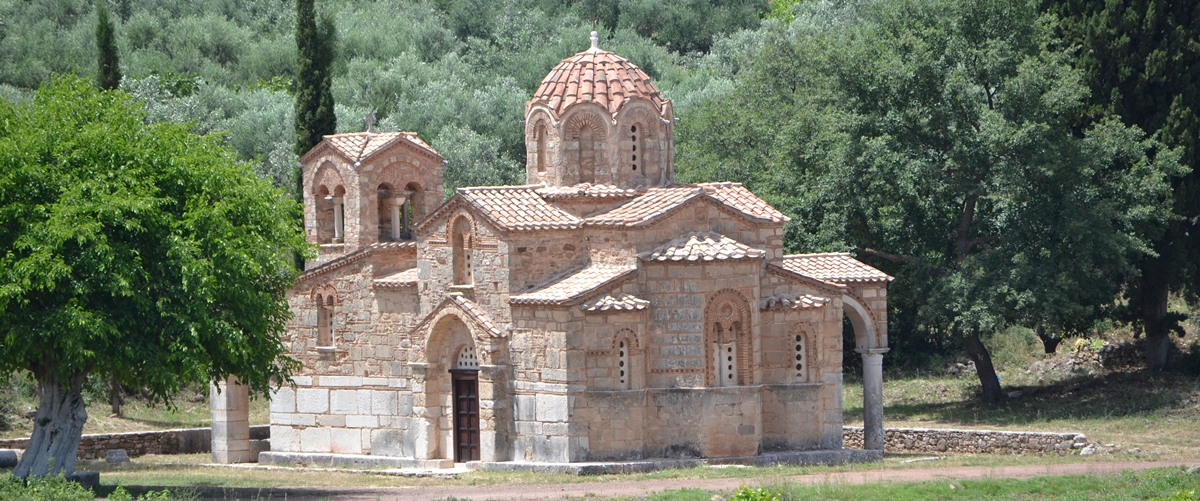SAMARINA

PLEASE NOTE THAT ALL THE PHOTOGRAPHS ON THE SITE ARE CLICKABLE LINKS

PLEASE NOTE THAT ALL THE PHOTOGRAPHS ON THE SITE ARE CLICKABLE LINKS
Church of the Virgin Zoodochos Pigi Samarina (Life Giving Source).
The church is one of the most beautiful Byzantine monuments of the Peloponnese, dating back to the 12th century, in the village Kalogerorrachi in an open area of a beautiful valley.
It was originally a Catholic church of the nunnery of Osia Mary of Egypt, but today the church of the village is dedicated to Zoodochos Pigi. It has been proven that the church was built over an ancient temple dedicated to the goddess Rhea.
It is a two-column domed cross-in-square building, it has three apses to the east while a bell tower was built later to the west. The choice of masonry and decorative brickwork make it an extremely artistic complex.
The wall paintings of the naos, which are partially preserved, reflect the so-called "academic" trend of the late 12th century.he outstanding marble sulpture of the emplon screen dates back to the second half of the 12th century and include the architrave which is decorated with animals and geometric motifs.
he outstanding marble sulpture of the emplon screen dates back to the second half of the 12th century and include the architrave which is decorated with animals and geometric motifs.
These are connected with the famous 'Samarina sculpture workshop' that has sculptures in the areas of Laconia and Arcadia also.
Two elaborate marble shrines surmount the fresco representations of the Enthroned Christ and the Virgin with Child. The floor of the church is made of large marble slabs and marble inlays.
The restoration of the church was carried out from 11.11.2011 to 31.12.2013 and was financed by the NRF (National Strategic Refererence Framework) at a cost of 170,000E.
The project incuded the recovering of the tiled roofs, the restoration of the decorative brickwork and the installation of new wooden doors.
The wall paintings were entirely restored and the marble templon screen was cleaned to restore its white colour and to preserve the traces of inlaid wax and mastic gum.
Unfortunately when I visted the church it was locked and I could not find out who had the key to let me see inside.
Not far from the church to the north and west stand the ruins of other buildings, presumably monastic cells, as well as a vauted Byzantine cistern, (photograph of the ruins of the cistern to the left). Nothing is known about the monastery's history, which in itself is remarkable.